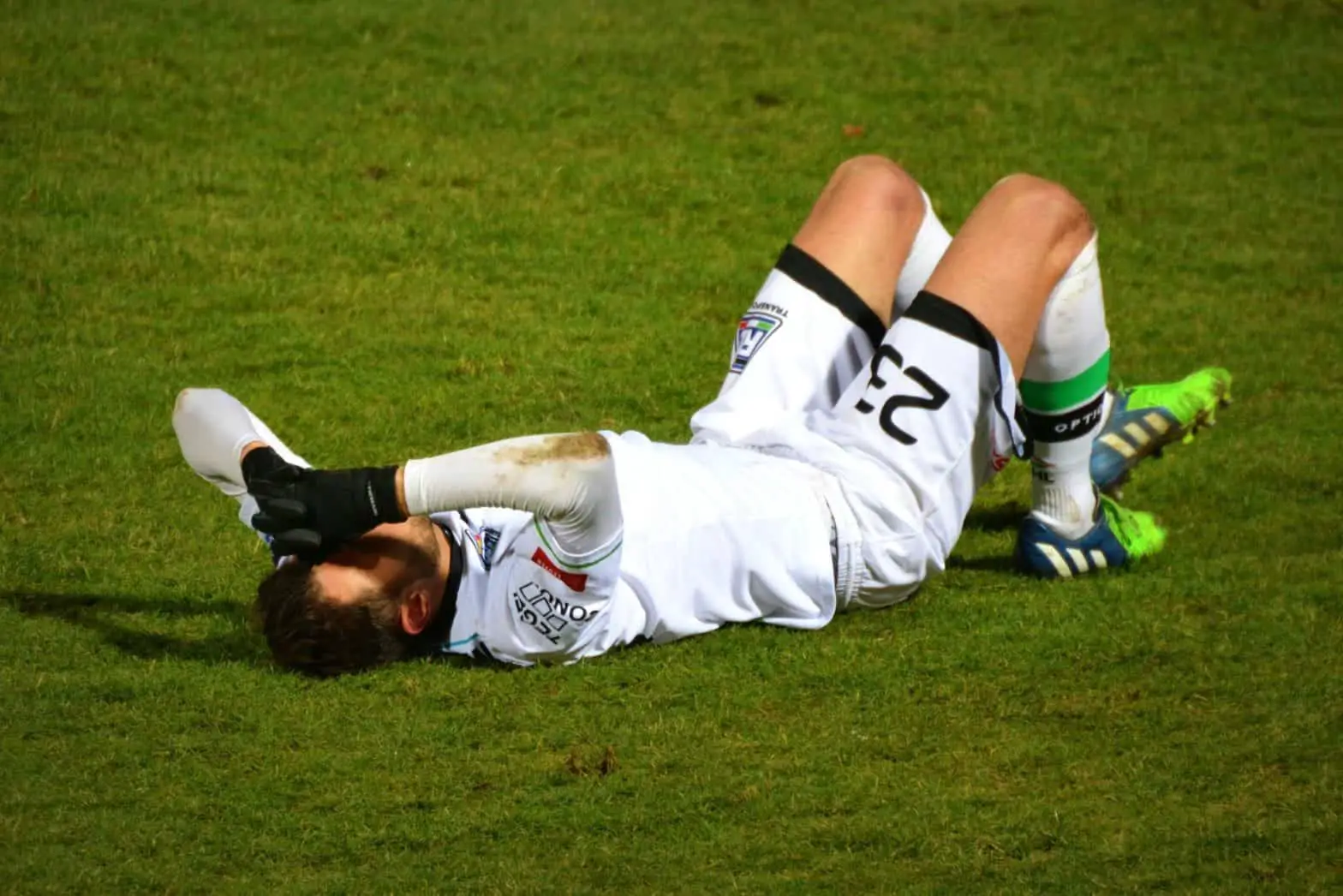Table of Contents

Burnout, or overtraining syndrome, can be complicated for many reasons. First, fatigue is a natural part of anyone engaged in serious fitness training or athletes training for competitions. Second, medical and psychological issues may be reasons for the fatigue and when these are addressed the athlete might feel relief.
For example, consider Tanya. She was a serious high school athlete who appeared to have burnout by her coach. In addition to reducing her training load, she asked Tanya to see a sports psychologist. The psychologist, upon learning about her symptoms of fatigue, not running times she had in the past, shortness of breath and lack of interest in her typical activities, recommended she see a medical doctor to have some tests run. The reason for involving medical at this point is to fully understand what may be underlying these symptoms. She may have burnout but she may also have low iron levels or even clinical depression. For these reasons, determining if one has burnout can be complicated and a team of people consisting of the coach, medical doctor and a psychologist may be best in terms of determining if an athlete has burnout.
*This post may contain affiliate links. As an Amazon Associate we earn from qualifying purchases.
Symptoms of Burnout in Sports

The term burnout is often used in more general terms to describe being tired or having a sense of fatigue related to training. But burnout can be an actual syndrome when athletes feel little to no motivation and a sense of mental and physical exhaustion. Sometimes this is also called over-training syndrome. When feelings like this occur do not ignore them and make a plan.
Factors that are associated with burnout and its symptoms in athletes include too much training for a particular person (we are all different in terms of handling load), an increase in emotional stress, and insufficient recovery time.
The symptoms of over-training in athletes can be divided into various categories:
a. Movement Coordination Symptoms
- Difficulties in the flow of movement and rhythm
- Difficulties with completing basic routines
b. Condition or Training Symptoms
- Reduced endurance power, speed, and strength
- The sense of fatigue compared with other times of same training schedule
- Diminished competitive qualities and a need for increased recovery time
- The sense of ongoing struggle to complete work-outs
- Increased resting heart rate
c. Psychological Symptoms
- Mental fatigue or fog
- Feeling of irritation
- The negative perception of feedback or criticism
- Mood changes with more low mood or depression
- Anxiety
- Possible sleep problems with too much or too little
It is important to address areas of stress that can contribute to burnout. These might be with training schedules or aspects of one’s personal life. It might also be critical to see a sports medicine doctor and have a consult for immune issues or other biological sources of fatigue, such as low Vitamin D levels. This information can help with devising a solid and comprehensive recovery plan.
Additionally, speaking with a sports psychologist can be helpful. Typical issues that might be addressed include coping with mood issues, concerns about taking a break from training or a sport and making lifestyle changes.
Generally, a good recovery plan from true burnout might entail a reduced training load, addressing any medical issues, and a means to reduce overall emotional and physical stress. There may also be a reduced competition schedule and a plan for how best to rest and reset.
Suggestions for Avoiding Burnouts
 Training and competing for any sport is obviously time-consuming and exhausts both the mind and body. However, if balanced correctly, the training load can be better managed.
Training and competing for any sport is obviously time-consuming and exhausts both the mind and body. However, if balanced correctly, the training load can be better managed.
Some very simple suggestions for avoiding burnout are listed below. Many of you will be familiar with them but it is always good to be reminded. Here is how you can prevent getting symptoms of burnout:
1. Devise a Plan
Use a training plan designed by your coach or another fitness expert. These professionals will make sure the program features adequate cycles of recovery and training. The plan should involve measures for progress and also be designed to be progressive and safe in order to prevent overuse injuries.
A good plan should also include different balanced workout and training routines. And a good plan should address the points listed below, such as cross training. For instance, instead of running long distances for five consecutive days you may include short tempo runs, strength training, and speed work. This type of training offers variety and decreases overuse of certain muscle groups.
2. Hydration

Drink water. Water fuels and powers a lot of bodily functions such as healing the body tissues, muscles, and helps reduce the feeling of lethargy. Hydration also has a role in preventing illness.
Unfortunately, this is one of the easiest corrections to make but many athletes ignore this advice and overlook the importance of water. Obviously, you want to be smart about how much, and when, to drink. I am sure many athletes also have experiences with drinking too much water at the wrong time. But know that healthy hydration can aid in muscle and tissue recovery.
3. Rest, Recovery, and Sleep
Resting days are equally as important as training days. Many athletes make the mistake of overtraining and not following the coaching plan for a rest day or period. But time off is extremely vital. Rest days are non-negotiable in any serious training program. Sufficient rest and recovery help the body to heal and recover from the intense workouts. It also gives the body a chance to develop muscular gains.
Additionally, proper sleep is imperative. Enough sleep helps to rejuvenate your mind and body in general. Again, muscles also need it as much as your mind. Sleep is part of this process overall and sometimes days off can aid one in having improved sleep.
4. Cross-Train
Cross-training lets you build not only your muscular strength but also your cardiovascular endurance while letting your joints and muscles recover. For example, activities such as swimming and cycling put more pressure on the cardiovascular system while weight training or short bursts of power help train different aspects of your body and system. In addition, it is important to note that ample evidence exists that athletes are better off confining their sport to its season and participating in other activities outside of season. There is a study of 1,200 youth athletes conducted by Dr. Neeru Jayanthi of Loyola University found that early specialization in a singe sport is one of the STRONGEST precursors of injury. Dr. Jayanthi found that athletes who specialized were 70-93% more likely to be injured than those who played multiple sports. Many athletes think that they need to focus only on one sport to reach the elite level, but consider that 29 or the 32 first-round picks in the recent NFL draft were multisport high school athletes.
An avid fitness trainer, or coach, should be flexible enough to stray from the typical workout routine and do new activities such as yoga, stretching or Pilates. Finally, the change to another workout routine is necessary to break boredom or monotony experienced in your regular routine. In this way, you also stay emotionally and mentally engaged rather than going through the motions of a routine.

5. Nutrition
You have probably heard that your body is a machine which helps you finish training and competitions. Therefore, just like any other machine, your body needs to be fueled.
Most serious athletes know about eating foods that are rich in whole ingredients (vegetables, fruits, whole grains, and lean proteins) provide some of the best fuel for your body. On the other hand, a diet rich in only junk meals will not help you with long-term results. Also, refueling and re-energizing your body through appropriate snacking and adding needed calories at strategic times will help you avoid injury, fatigue, and burnout.
Final Thoughts
Symptoms of burnout can be painful and stressful. They may affect your performance and your overall health. The tips for avoiding burnout addressed in this article will help you stay healthy. Take charge of your body today and stay committed to the fundamental building blocks of sleep, hydration, recovery, cross-training, and nutrition.

